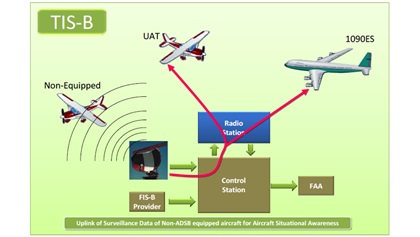Aircraft Maintenance: What you need to know about the ADS-B performance monitor
It’s been nearly two years since the ADS-B mandate took effect. While most of the drama associated with getting aircraft equipped with ADS-B has subsided, the ramifications of flying and maintaining aircraft within the new world of ADS-B continue to be a learning experience for many.
The old days of turning off your transponder outside of controlled airspace are gone (unless ATC requests it). Even “cycling” your transponder (which controls your ADS-B output) can cause issues. The FAA’s order on compliance and enforcement spells it out and the repercussions for not following the rules can be severe.
- It must be working properly, to the standards of FAR 91.227—Automatic Dependent Surveillance-Broadcast (ADS-B) Out equipment performance requirements.
- You must be transmitting the correct tail number or Flight ID, matching the aircraft and your communications with ATC.
- It must be turned on at all times, per FAR 91.225—Automatic Dependent Surveillance-Broadcast (ADS-B) Out equipment and use.
These requirements and the associated enforcement actions are not just about the FAA arbitrarily looking for violations. The fact is that the same things that make ADS-B technology such a compelling tool for air safety can also turn small mistakes into big problems.
Consider this real-world example the FAA has shared in presentations to mechanics in which a routine biennial altimeter/encoder and transponder check caused an emergency deviation of an airliner:

Maintenance personnel were doing a routine ground test of an aircraft’s pitot/static, altimeter, and transponder system (ground testing involves simulating various altitudes, testing the instruments and the output of the transponder). During the testing, the output of the ADS-B transponder was received by a nearby ADS-B Ground Based Transceiver (GBT) and re-broadcast through the ADS-B Traffic Information System (TIS). This situation presented the transponder Unit Under Test (UUT) as a real-world traffic conflict to a Boeing 737 flying overhead, which was forced to take evasive action in response to the resolution advisory from the 737’s traffic alert and collision avoidance system. In addition to the impact on the 737, the false target data had a ripple effect on traffic to a major airport following the incident.
Prior to ADS-B, we lived in a world where it was much less likely that a UUT would be seen by ATC or on the TCAS of aircraft flying overhead. There were guidelines in place to help prevent test signals from getting out, but the requirements for keeping tests “quiet” have changed dramatically with the proliferation of GBT antennas across the country. These days, even a momentary leak of ADS-B transponder test data could easily be picked up by a nearby ground station (and it doesn’t help that the exact locations of GBTs are kept secret for national security reasons). It is incumbent on anyone working on an aircraft to be extremely careful to avoid sending bad ADS-B data into the system. It’s not just the avionics shops that need to be careful. Any maintenance facility, or even an experimental aircraft builder testing a static system with a transponder left powered on, could accidentally send out bad data.
And the FAA is watching. The FAA has a tool called the ADS-B Performance Monitor (APM) that evaluates all ADS-B data throughout the ATC system, 24/7, in order to detect noncompliant aircraft. Among other things, the APM is used to detect:
- Non-equipped aircraft operating in ADS-B rule airspace.
- Improperly operating or configured ADS-B equipment.
- ADS-B equipment turned off or reset during flight.
- Incorrect Flight IDs and Call Sign Mis-Match (CSMM).
- ADS-B systems not meeting performance standards.
- Airworthiness issues and suspect data.
With systems such as the APM in place, it is more important than ever before to understand ADS-B technology and your responsibilities under the rules. Be sure that your ADS-B system is working properly. The FAA offers a web-based APM tool that allows you to get a report on your particular aircraft's ADS-B flight history. It is your responsibility to use it and check the report to make sure that your equipment is working properly.
Next, you need to make sure your system is on during every flight (and fly as if someone is watching). If you find the need to do a power reset on any of your avionics during flight, do it individually without power-cycling your ADS-B system. If you absolutely have to power off your ADS-B in-flight, you should inform ATC. However, be advised that will not prevent the APM system from flagging the event for the FAA to investigate.
Lastly, be very careful anytime that maintenance on your aircraft could cause an erroneous signal to be sent from your ADS-B transponder. Think of your transponder similar to your emergency locator transmitter; setting it off improperly could start a chain reaction of responses above and around you.
For more information, the FAA Safety Team and flight standards district office folks host informative webinars on these subjects, which can be found on the FAA Safety Team website and SocialFlight.com. Until next time, I hope you and your families remain safe and healthy, and I wish you blue skies.



